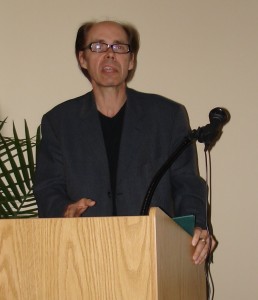Many writers approach the process of manuscript
submission using the same strategies writers used in 1990. Rapid, recent
changes in the publishing industry render those strategies ineffective. Author,
editor, and writing coach Richard Krawiec spoke about the publishing
industry on 8 April at the Raleigh Writers Morning Out, sponsored monthly by
the North Carolina Writers Network.
"The publishing industry has ceased to serve the needs
of the writer," he said. "The industry isn't looking to buy books.
It's looking to reject them."
That news didn't surprise me. However his next revelation
was a puzzle. The decision to publish one manuscript over another is no longer
made by senior editors at publishing houses. That decision is now made by
people in a publisher's sales department.
Apparently senior editors are skittish of championing
publication of a manuscript. If the book bombs, the editor fears that the sales
department will say that the editor failed.
This scenario invites a number of questions. There's the
matter of how an editor's job has morphed. Writers know that they cannot expect
a publisher's editor to extensively line-edit their works, as editors did decades
ago. But if editors now have quit championing favorite books, what exactly
does an editor's day job entail? If sales departments are making yea-or-nay
publishing decisions, on what criteria do they base their decisions? Who in the sales department reads the books they're promoting?
Krawiec admitted that there was an element of flukiness
playing into the publishing success of several authors that he'd edited. Also,
each of these authors had worked hard, often investing thousands of their own
dollars to grab the right person's attention and achieve the break they needed.
Some talented authors, like Heather Jacks, have yet
to get their big break, despite hard work and talent. Jacks, who has written a
collection of humorous essays entitled MILF Notes, has taken orders for
hundreds of copies of her work and obtained cover blurbs, thus proving to
industry professionals that she knows how to hustle the book. Still no sale for
her.
For those in the audience who'd just started the submission
process, Krawiec emphasized that you don't get a second chance with agents and
editors. If you establish that you aren't professional (ex. a poorly written
query letter, an amateurish attitude), you cannot return to those
agents and editors. The memory lingers.
When folks in the audience brought up the issue of how to
find time to write during their busy days, Krawiec insisted that to be
successful in this business, you have to be willing to write without the luxury
of time. And you must be willing to revise. He likened a manuscript's first
draft to a lovemaking quickie. You do it for yourself. But when you devote time
to subsequent drafts, it's like taking time to explore the skin of your
partner. You've made the conscious effort to turn your manuscript (or your act
of lovemaking) into art.
Krawiec's message was clear for those who seek publication.
Stay abreast of changes in the industry, adapt to those changes, and present
yourself as a professional.

